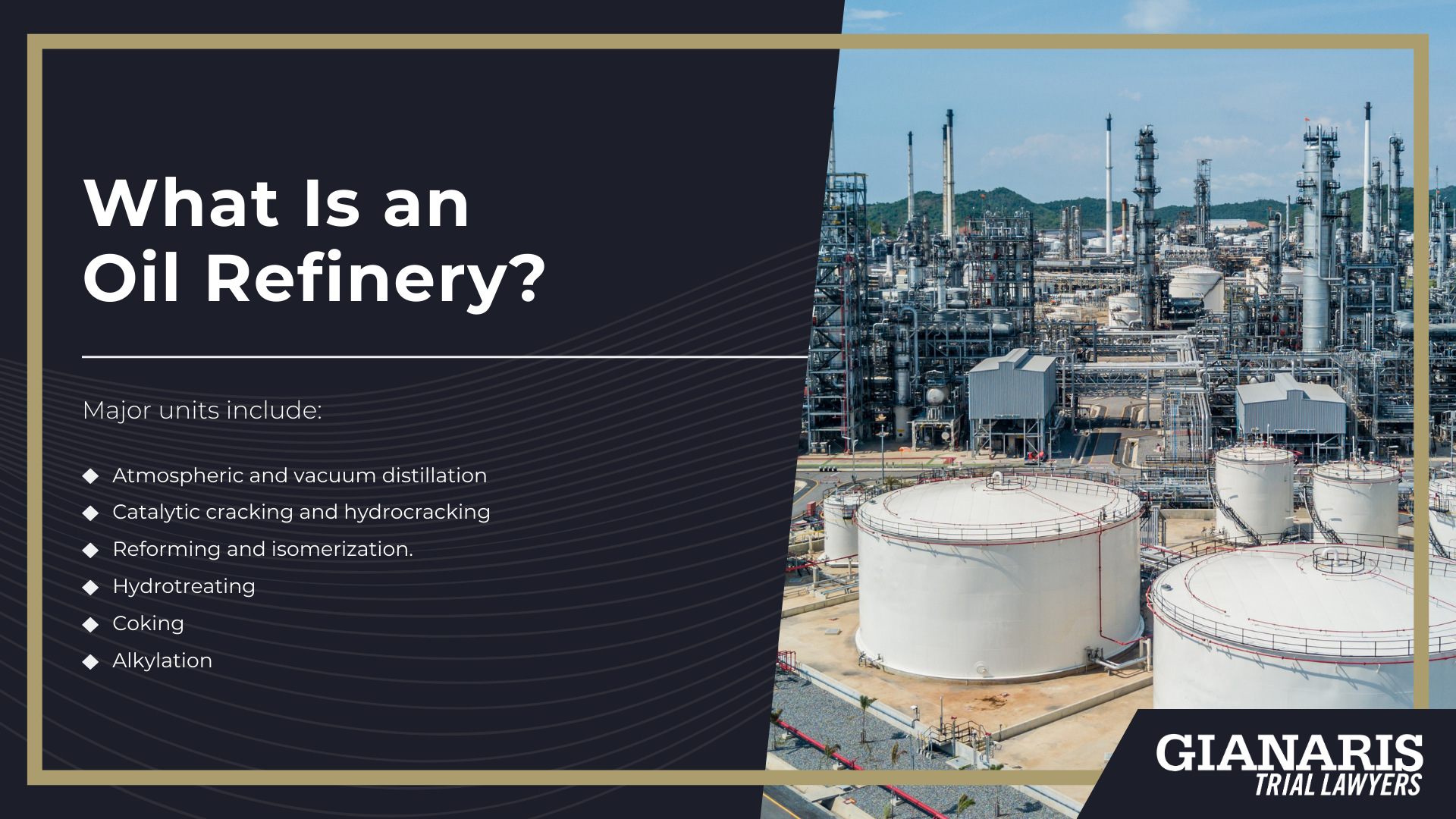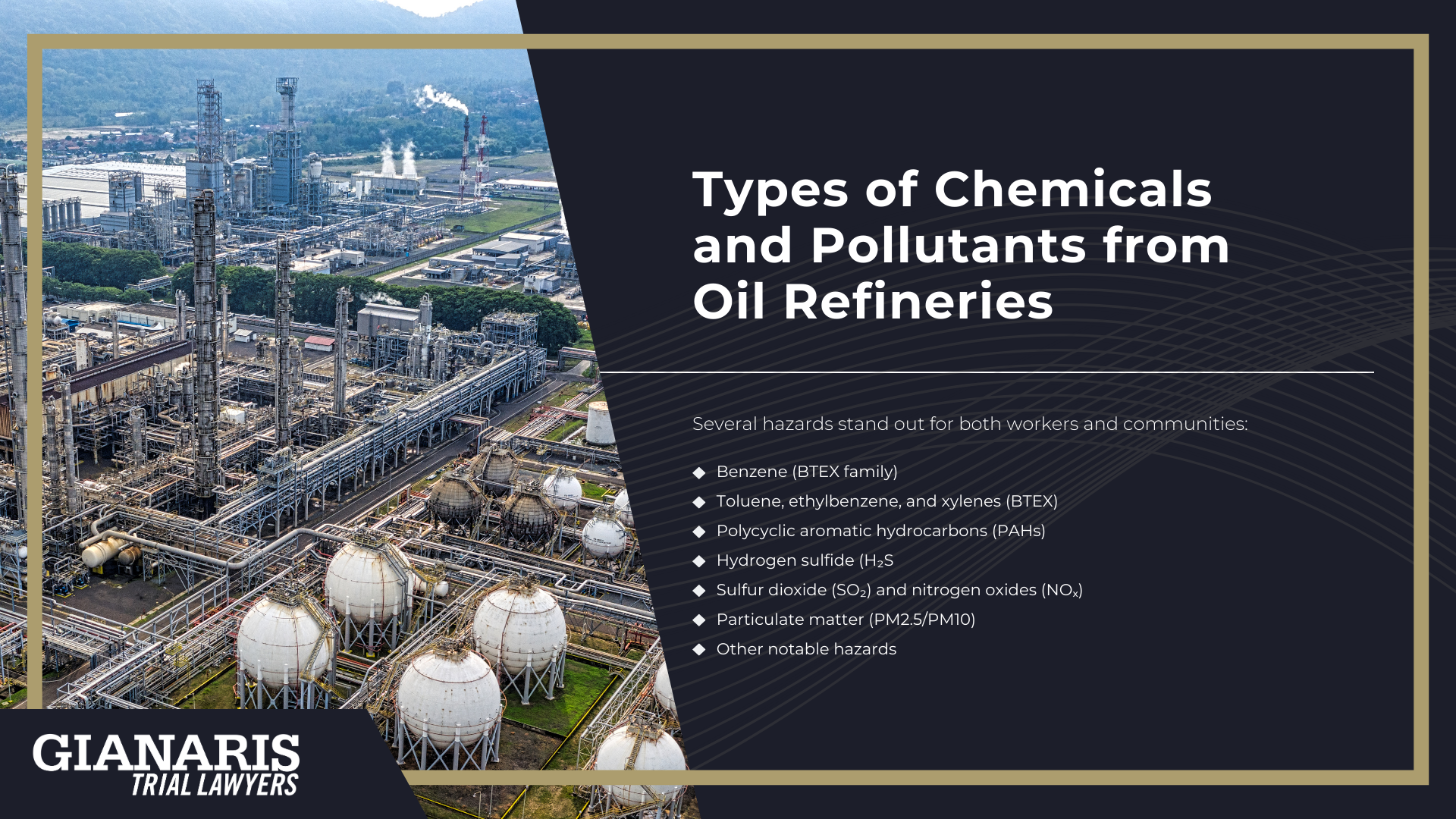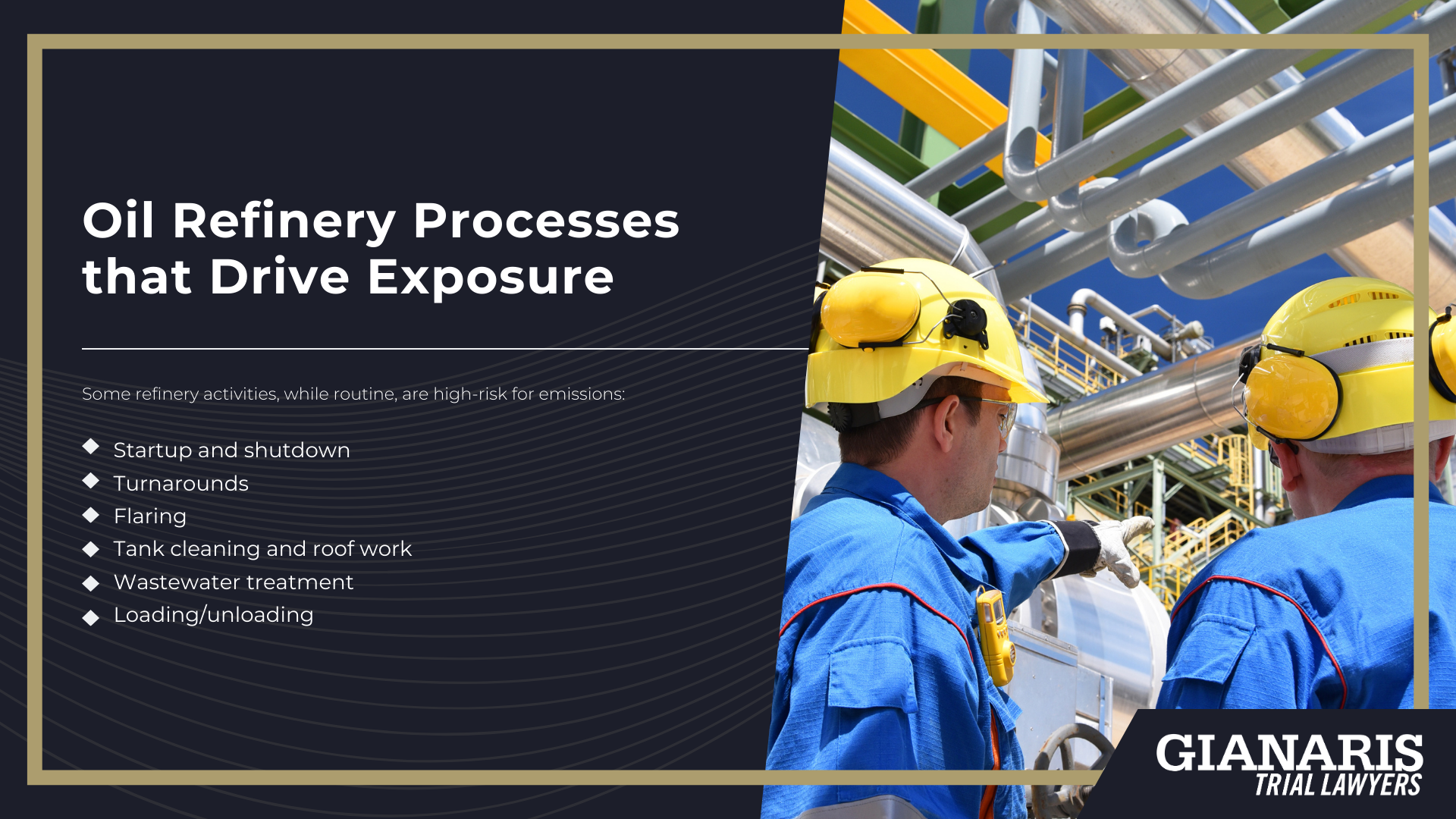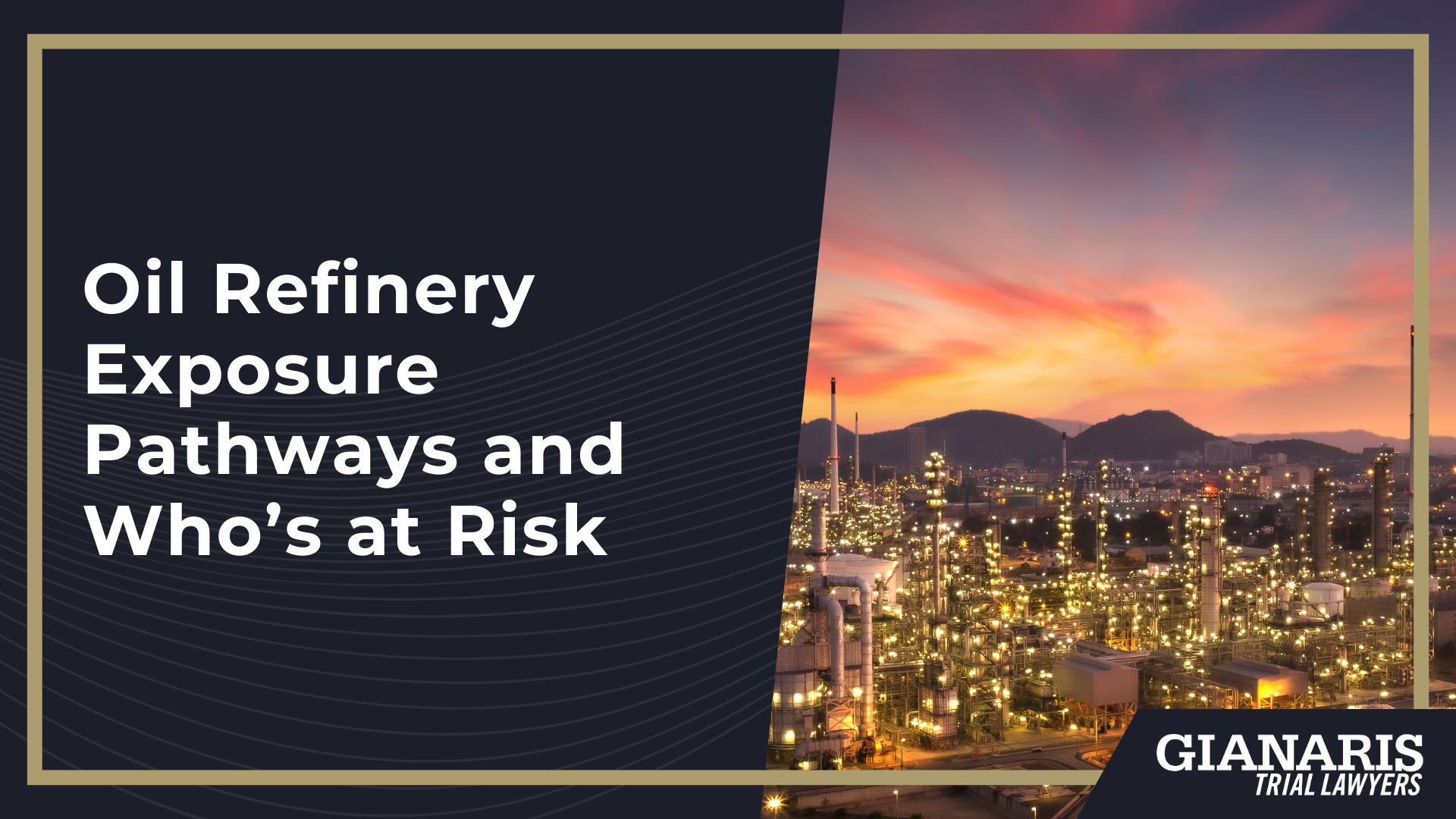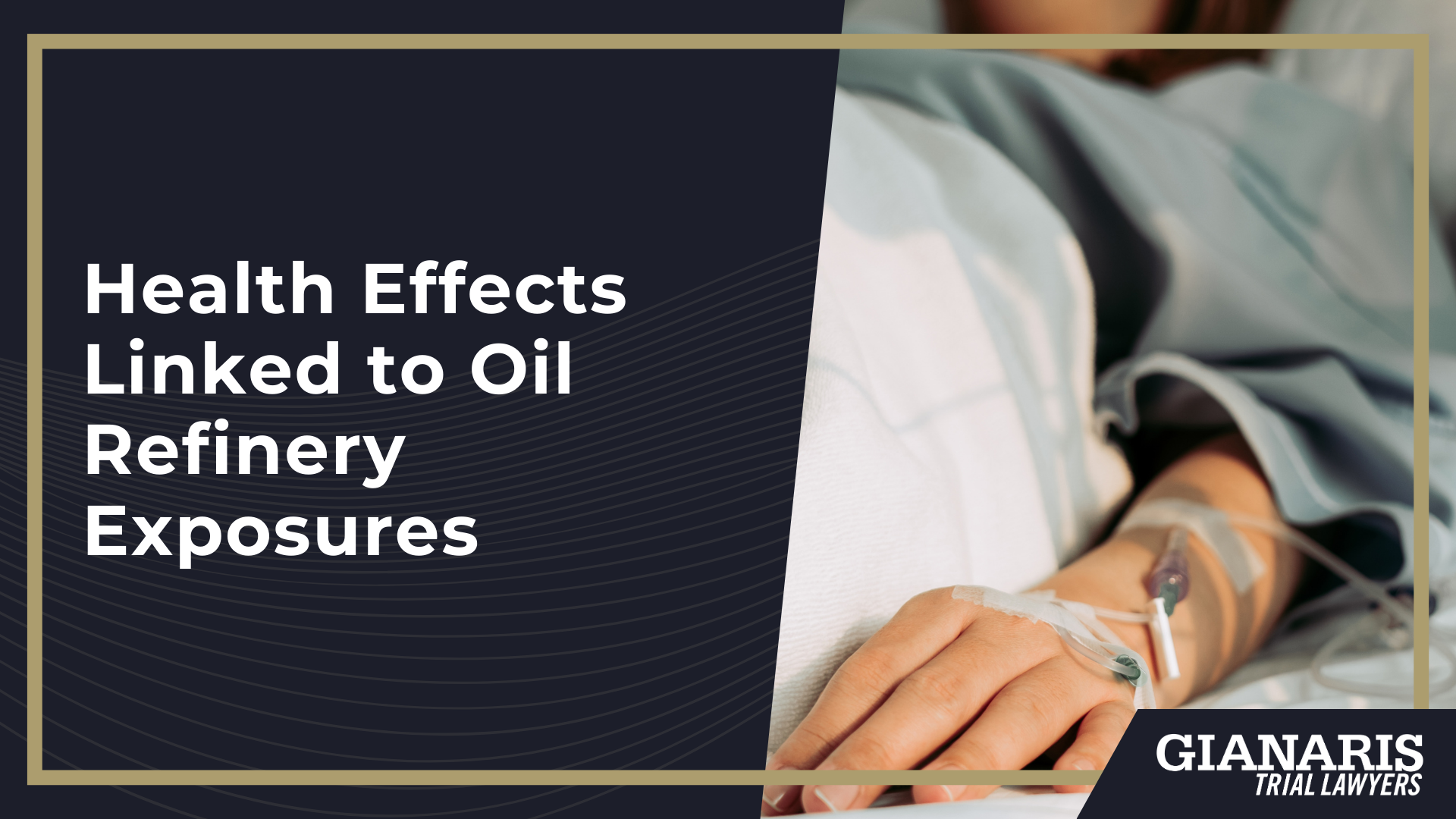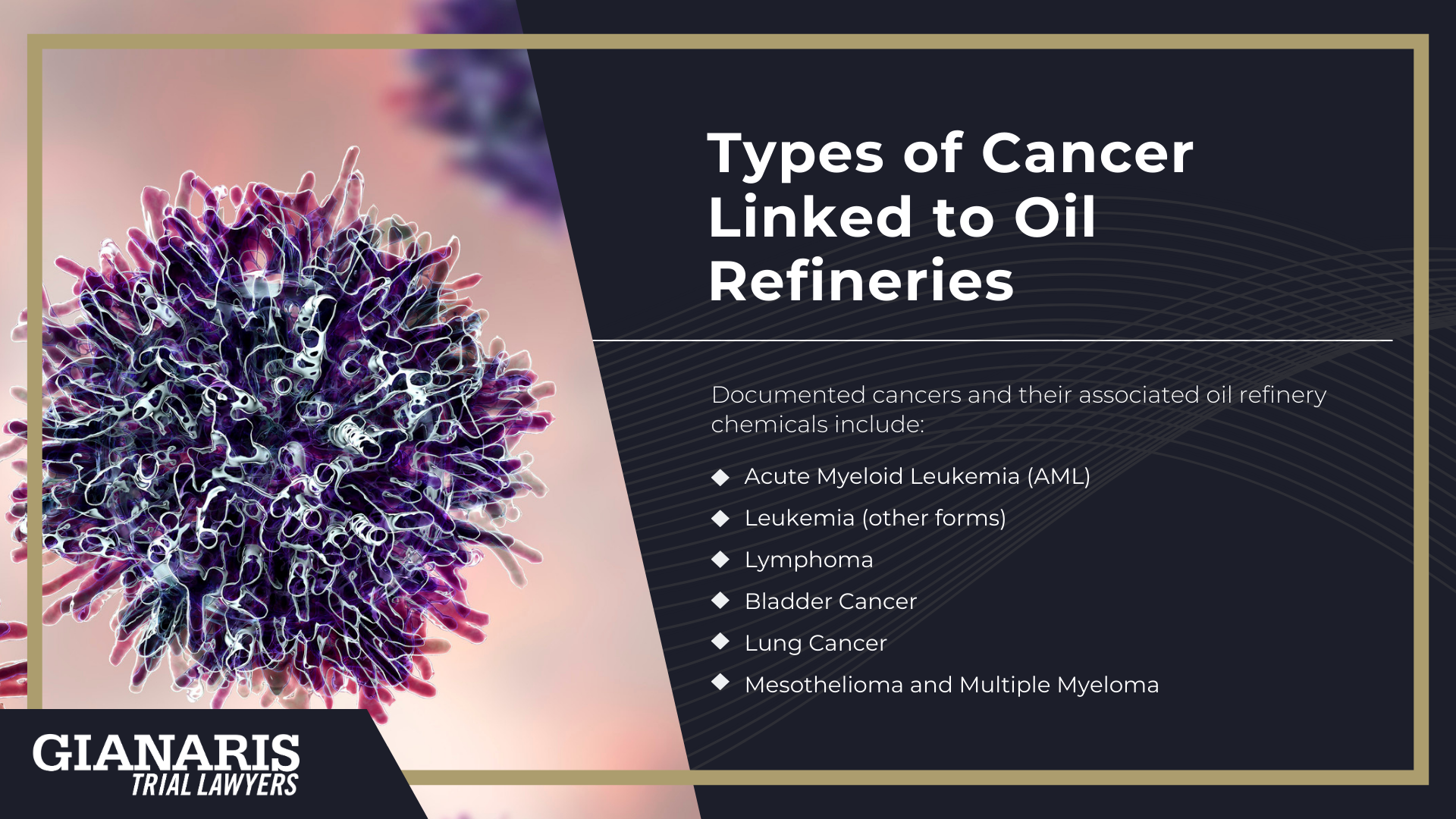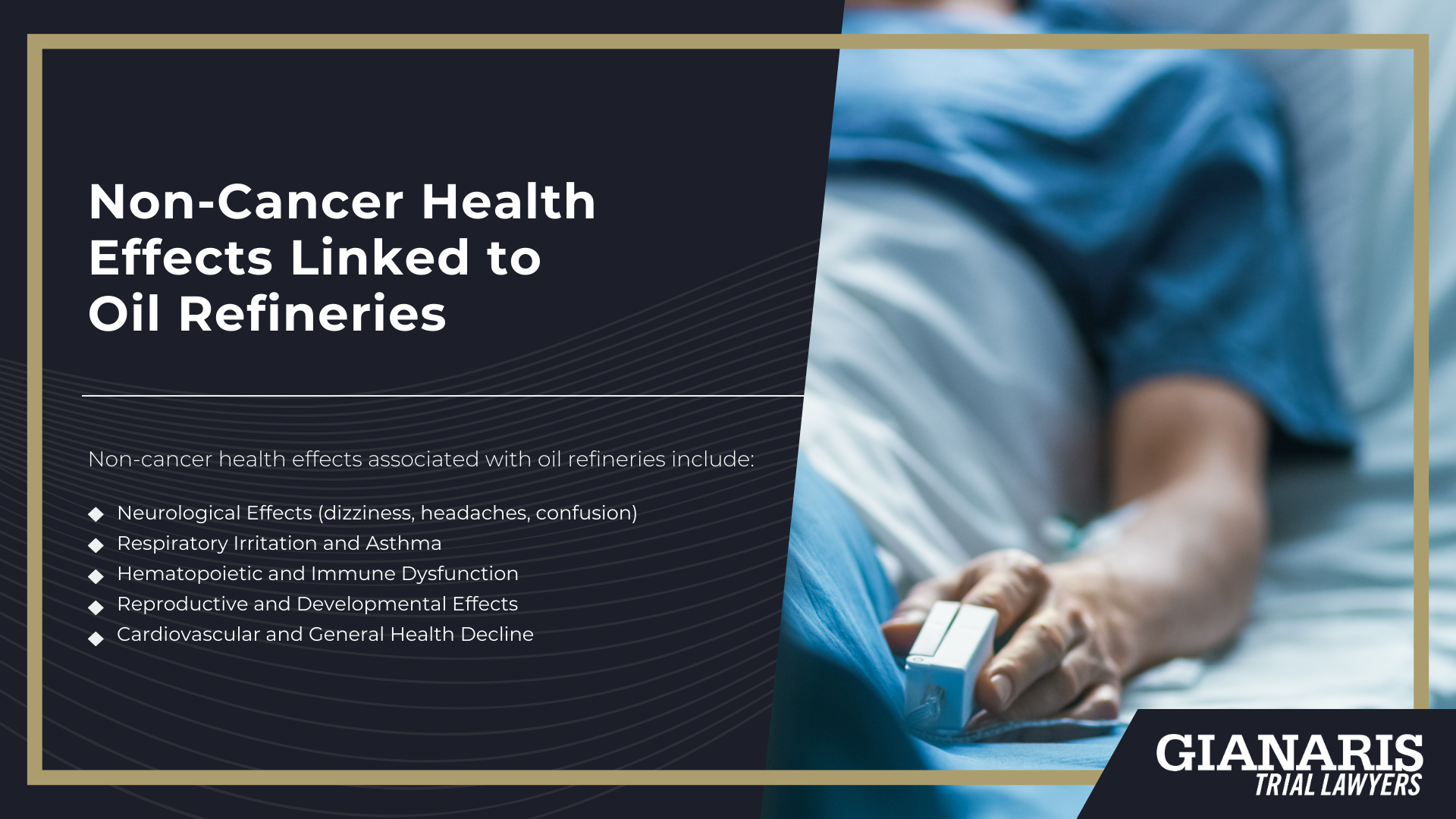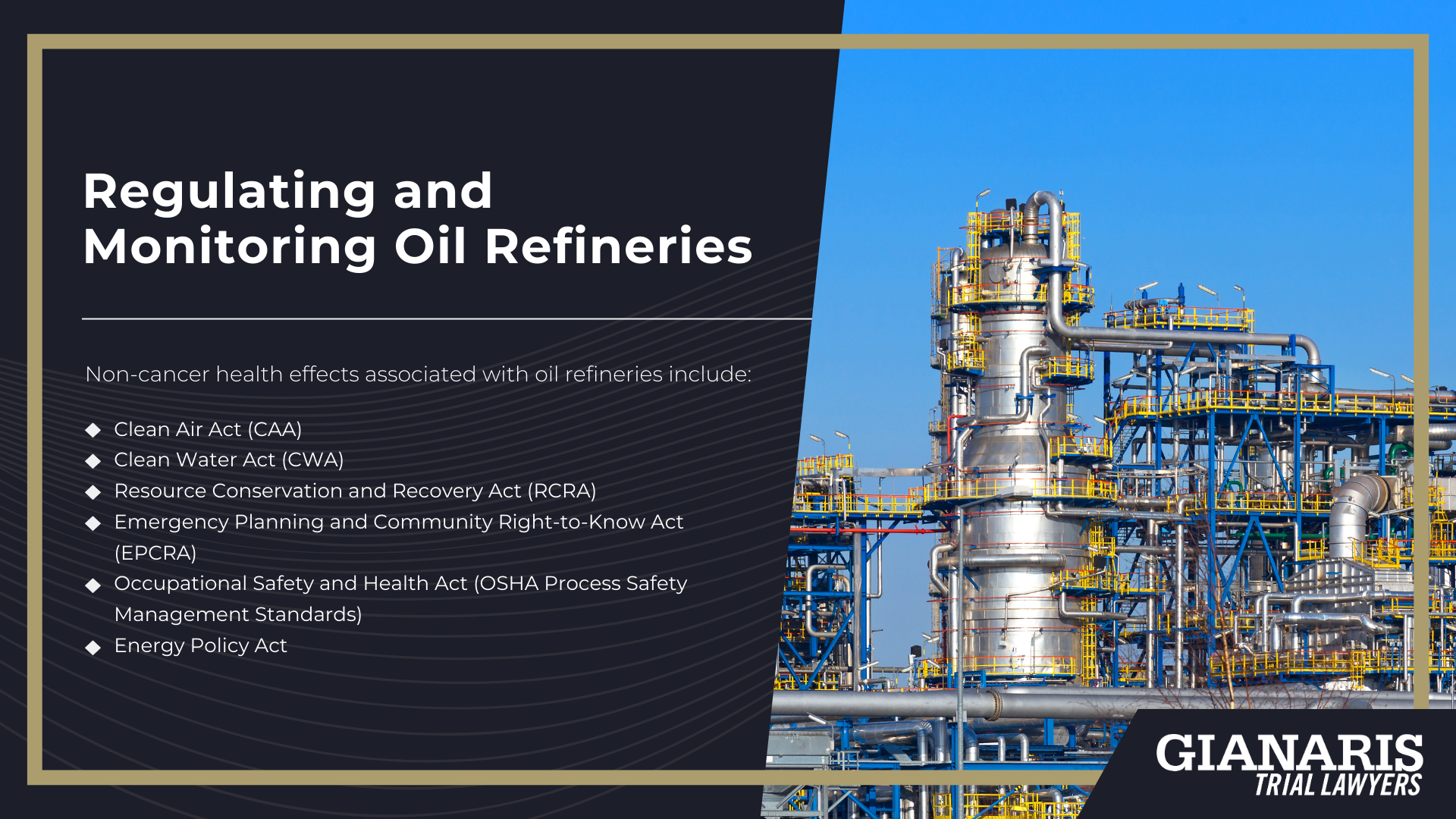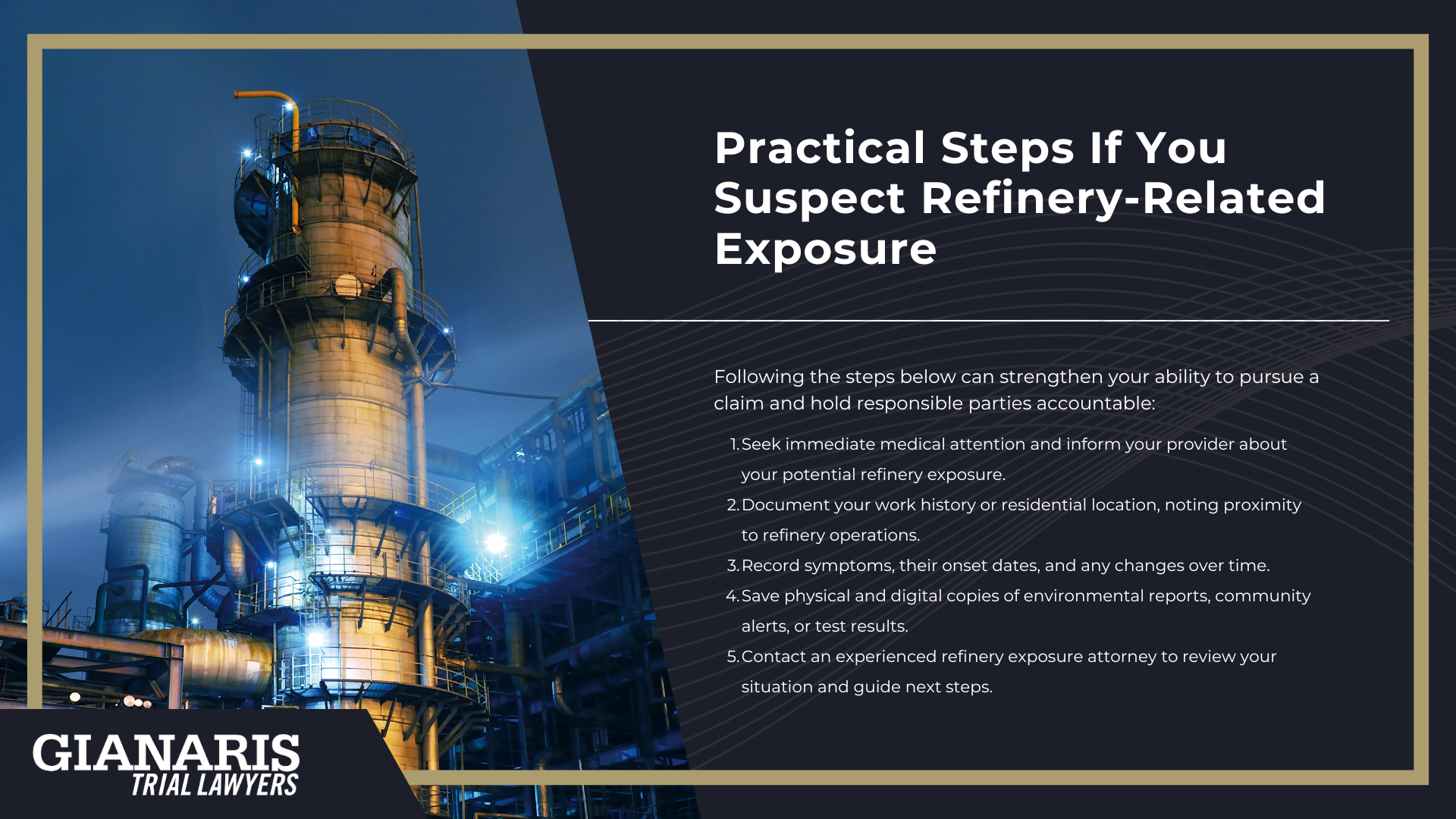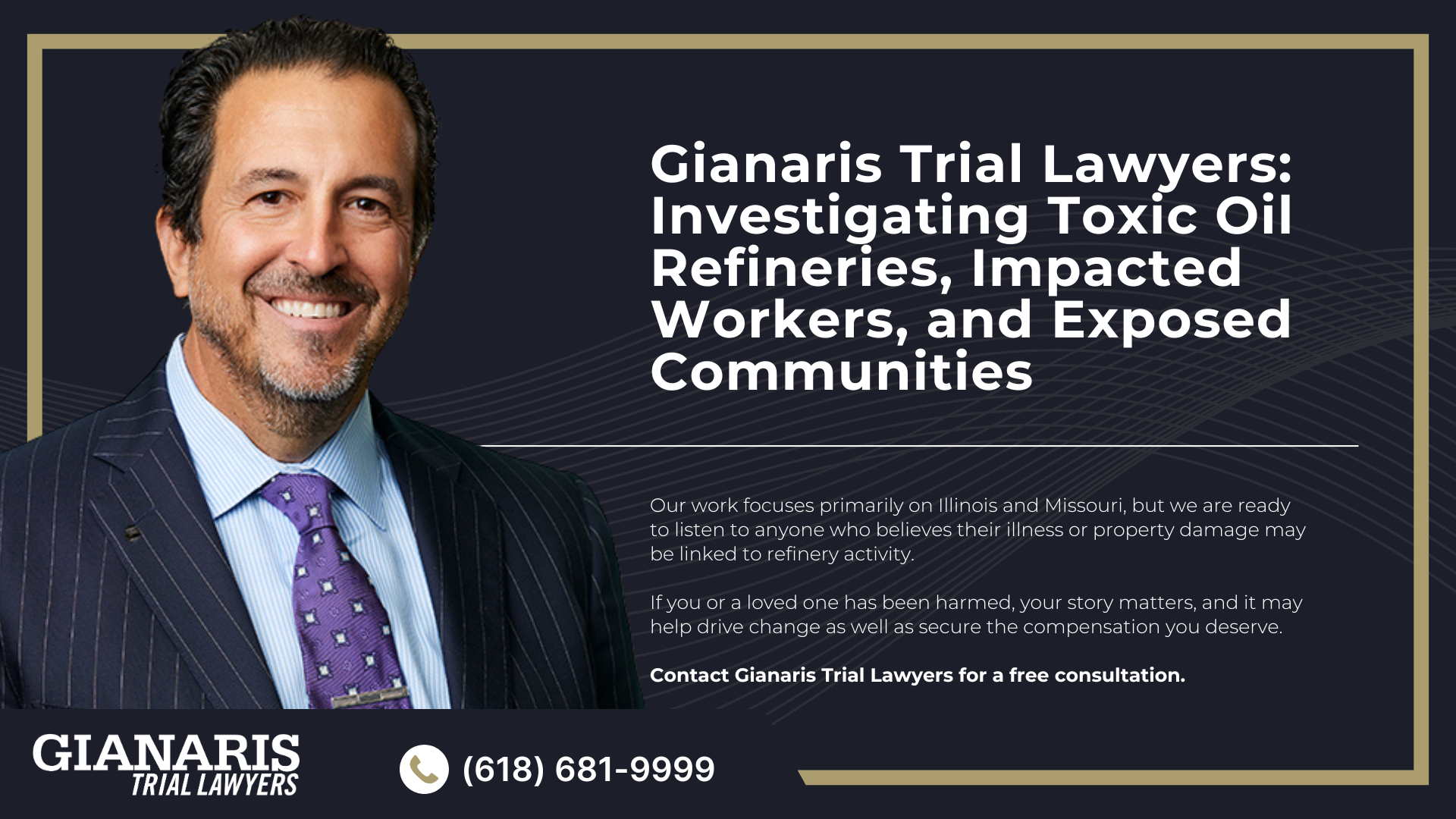People who have been harmed by toxic exposures from refinery operations may have grounds to take legal action against those responsible.
This includes both individuals who worked inside refinery facilities and members of nearby communities who lived with ongoing emissions, leaks, or contamination.
Gianaris Trial Lawyers is actively investigating cases in Illinois and Missouri where oil refinery operations have been linked to serious illnesses and environmental damage.
Our focus in these states reflects the high concentration of refining and petrochemical activity, as well as documented concerns about community and worker health near our main law offices.
However, if you believe your health has been affected by refinery-related exposure in another state, we would still like to hear your story.
Oil refinery lawsuits can arise from both chronic, long-term exposure and acute incidents such as explosions, fires, or large-scale chemical releases.
These cases seek to hold companies accountable for unsafe practices, inadequate safety measures, or failures to control harmful emissions.
By sharing your experience with us, we can determine whether the facts of your situation align with legal avenues for pursuing justice.
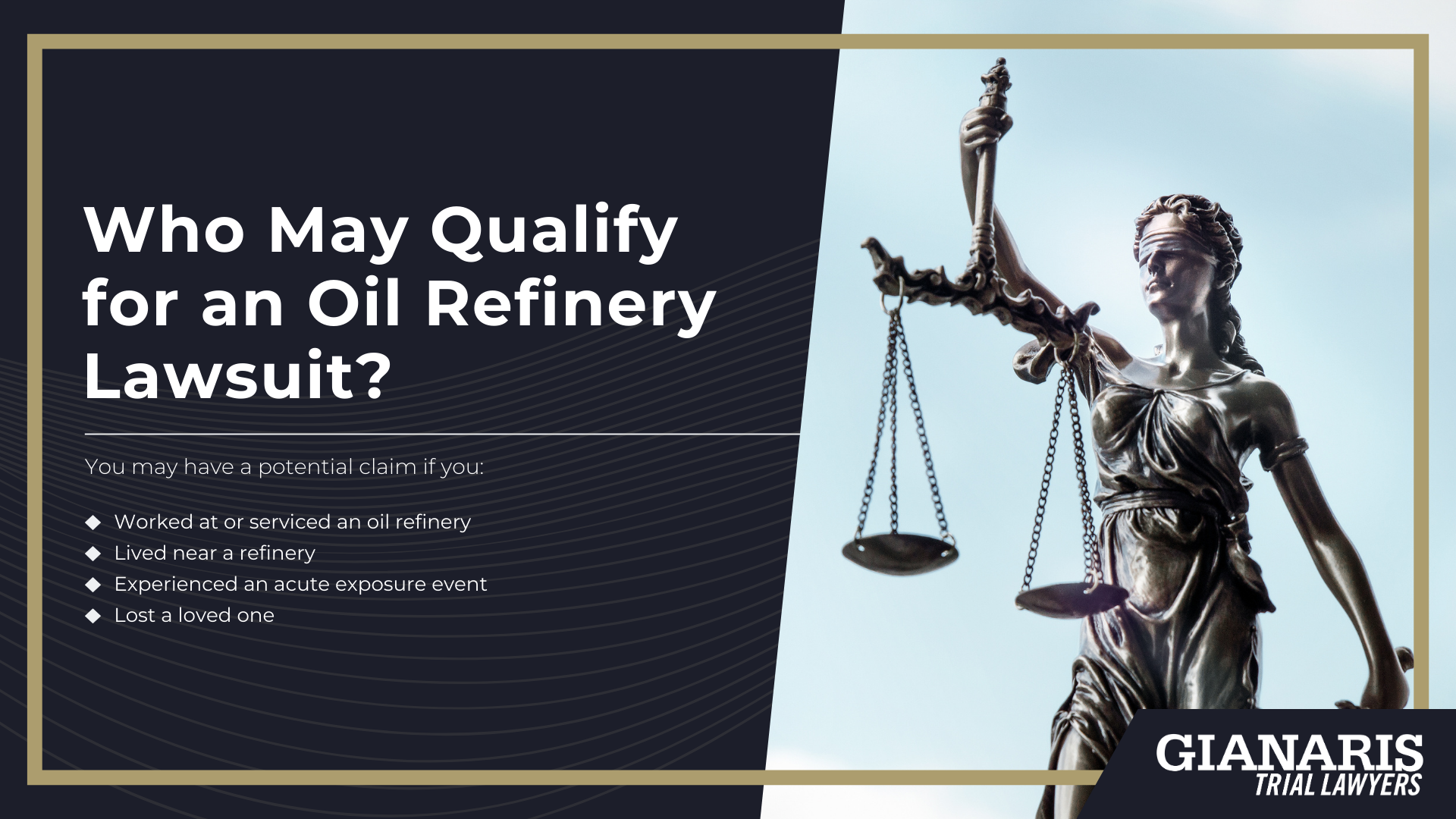
You may have a potential claim if you:
- Worked at or serviced an oil refinery and later developed a serious health condition linked to chemical exposure (e.g., leukemias/MDS, certain lymphomas, lung disease, severe blood disorders).
- Lived near a refinery and faced long‑term air exposure or property contamination followed by serious illness.
- Experienced an acute exposure event (large release, sustained flaring, shelter‑in‑place incident) and developed lasting respiratory or neurologic problems.
- Lost a loved one to a diagnosis associated with refinery pollutants.
Qualifying does not require a single catastrophic spill.
Many successful cases involve years of routine exposure supported by employment records, medical documentation, and environmental evidence.
Note: If you were a railroad worker servicing refineries, your cancer claim may arise under the Federal Employers’ Liability Act (FELA). Separate rules apply, and our team can evaluate FELA and third‑party claims together.
Legal Theories Used in Oil Refinery Exposure Cases
Oil refinery exposure lawsuits are built on established legal principles that allow injured individuals and affected communities to seek accountability from those responsible.
The specific legal theory applied in a case depends on the nature of the exposure, the relationship between the parties, and the type of harm suffered.
In many instances, multiple theories are used together to address both personal injury and property damage claims.
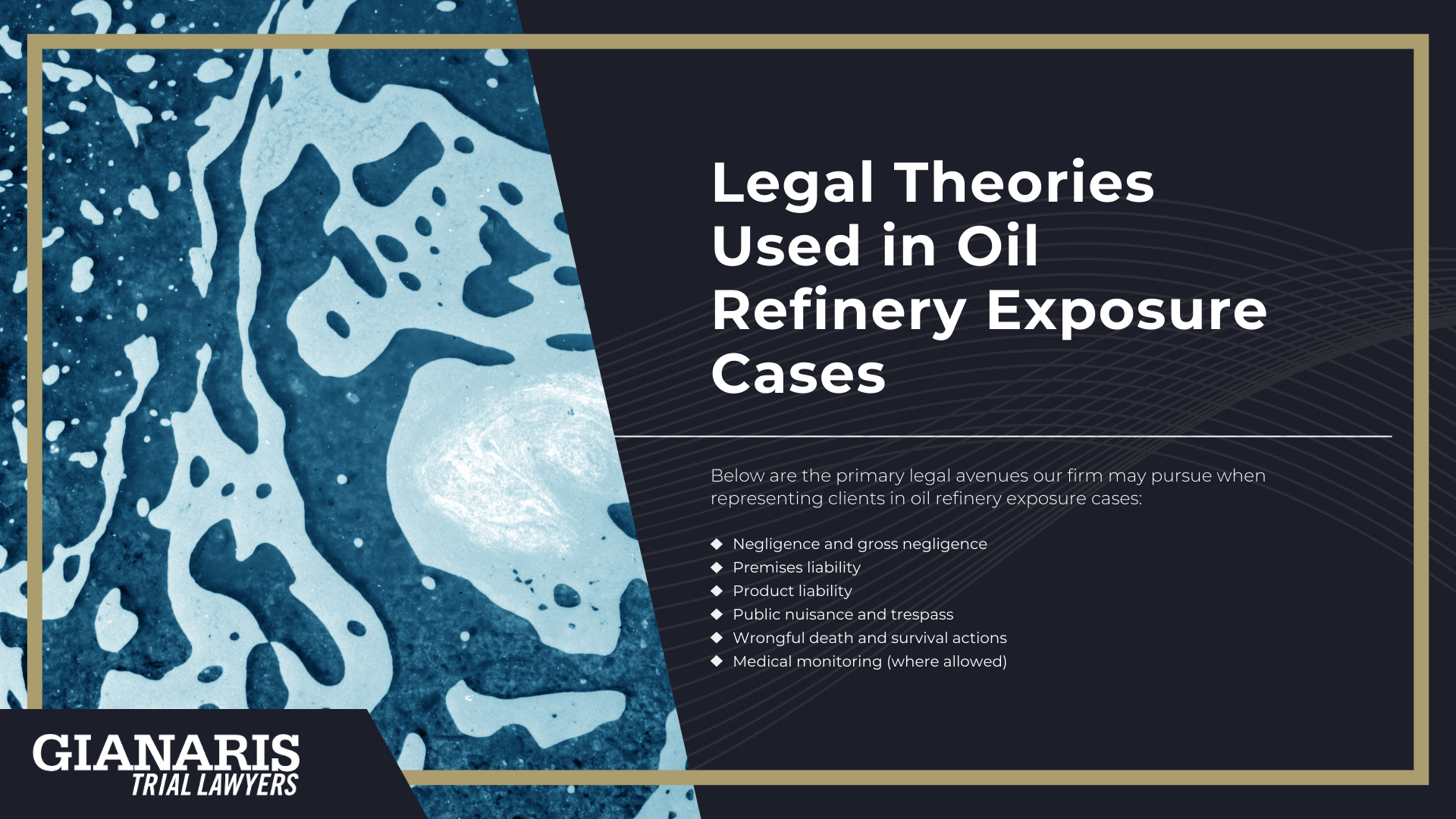
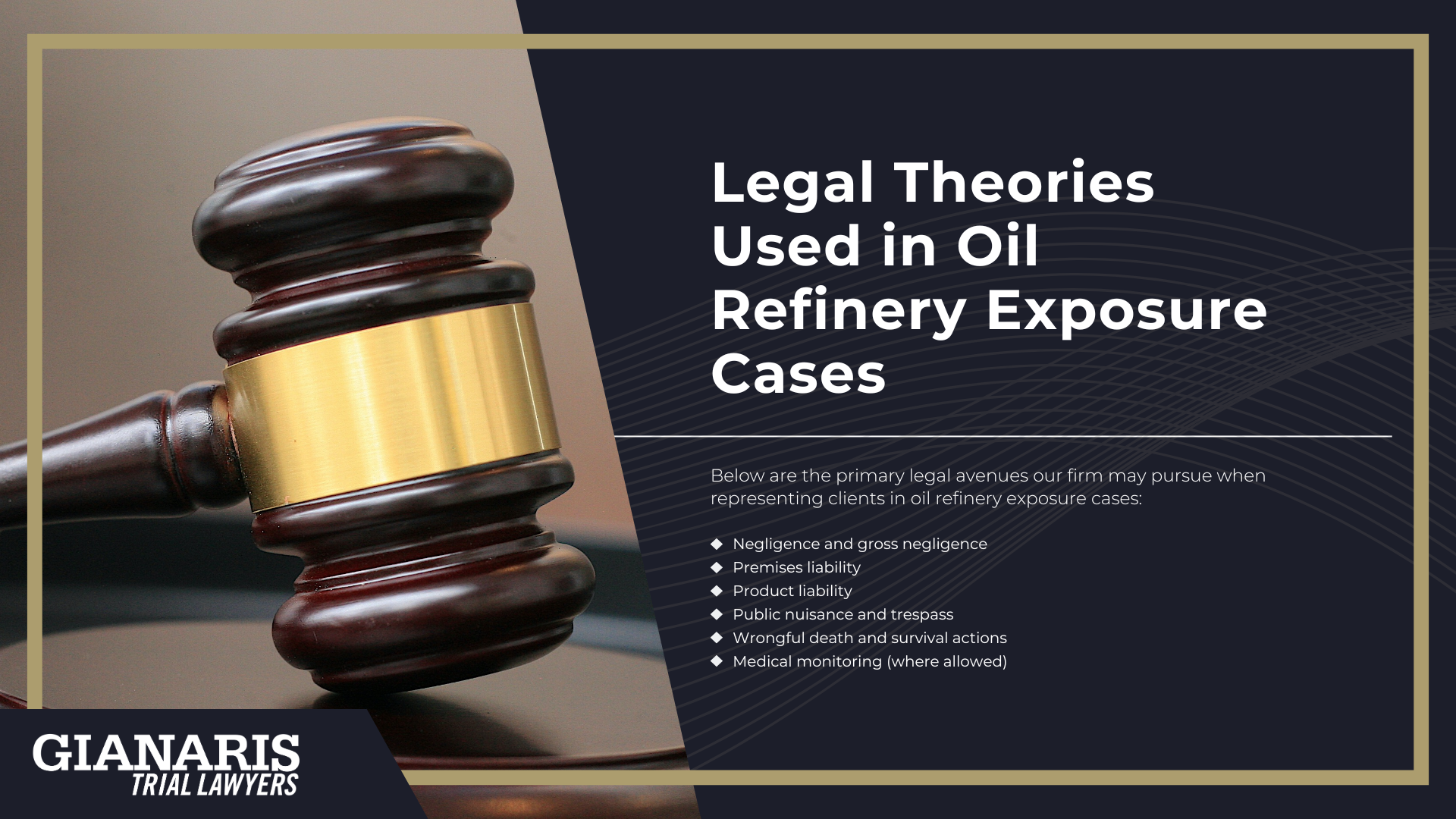
Below are the primary legal avenues our firm may pursue when representing clients in oil refinery exposure cases:
- Negligence and gross negligence – unsafe operations, inadequate maintenance, or failure to control emissions.
- Premises liability – dangerous conditions on refinery property affecting workers, contractors, or visitors.
- Product liability – dangerous chemicals, defective equipment, or inadequate warnings from manufacturers/suppliers.
- Public nuisance and trespass – community contamination affecting property use and value.
- Wrongful death and survival actions – for families who lost a loved one to exposure‑related disease.
- Medical monitoring (where allowed) – court‑ordered screening for at‑risk populations.
Applicable theories and defendants vary by state and by the facts of each case.
Evidence That Strengthens an Oil Refinery Case
A strong oil refinery case relies on clear, well-documented proof connecting the source of exposure to the harm suffered.
This evidence can come from multiple sources, including workplace records, environmental monitoring, and medical documentation.
For workers, detailed job history and safety data can establish where and when exposure occurred, while community members benefit from air and water testing that reflects local contamination.
Medical records and expert opinions bridge the gap between the exposure and the resulting illness, creating a persuasive link for courts or settlement negotiations.
Collecting this information early helps preserve crucial details and supports a thorough investigation into the refinery’s role in causing the damage.
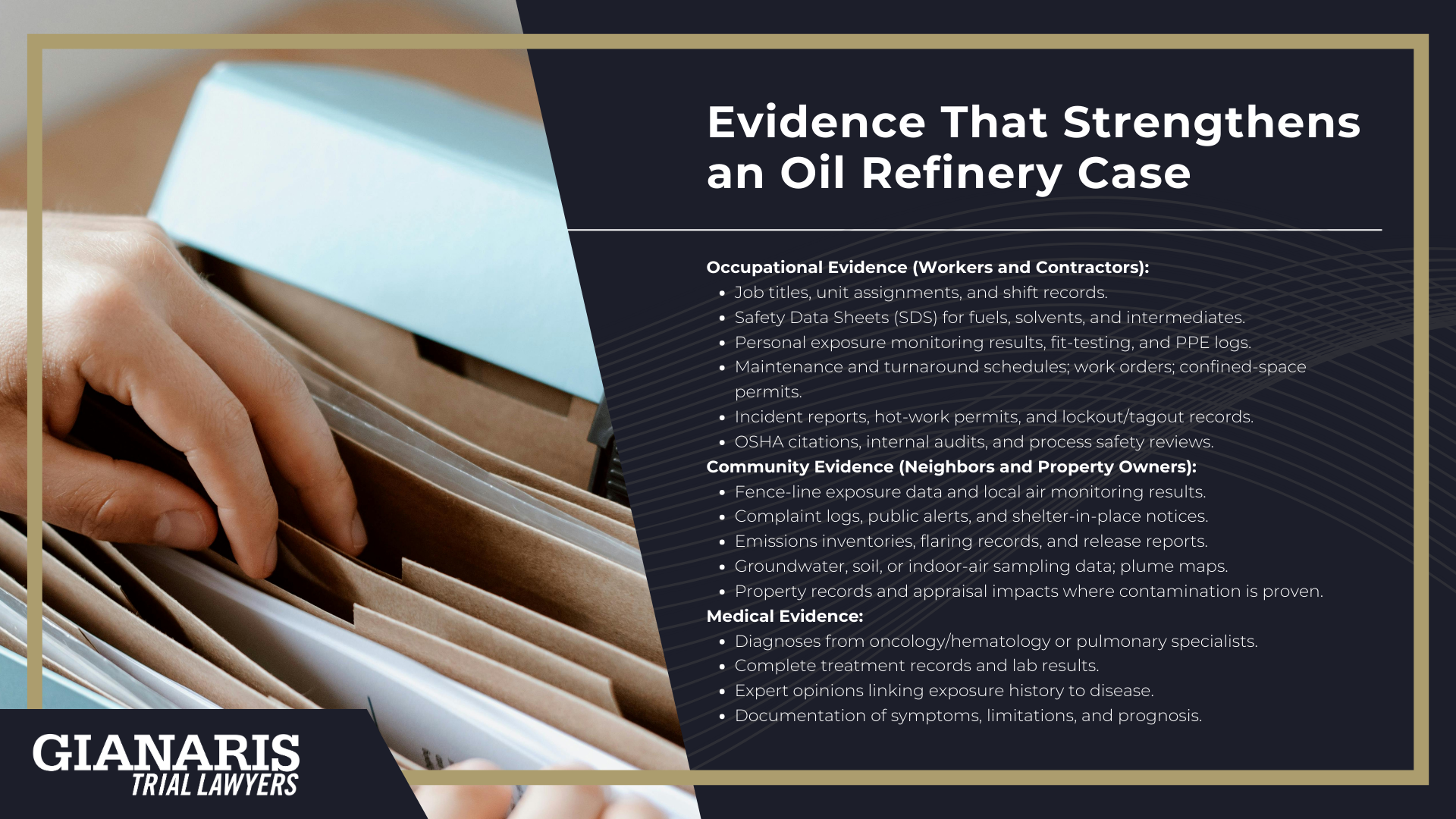
Occupational Evidence (Workers and Contractors):
- Job titles, unit assignments, and shift records.
- Safety Data Sheets (SDS) for fuels, solvents, and intermediates.
- Personal exposure monitoring results, fit‑testing, and PPE logs.
- Maintenance and turnaround schedules; work orders; confined‑space permits.
- Incident reports, hot‑work permits, and lockout/tagout records.
- OSHA citations, internal audits, and process safety reviews.
Community Evidence (Neighbors and Property Owners):
- Fence‑line exposure data and local air monitoring results.
- Complaint logs, public alerts, and shelter‑in‑place notices.
- Emissions inventories, flaring records, and release reports.
- Groundwater, soil, or indoor‑air sampling data; plume maps.
- Property records and appraisal impacts where contamination is proven.
Medical Evidence:
- Diagnoses from oncology/hematology or pulmonary specialists.
- Complete treatment records and lab results.
- Expert opinions linking exposure history to disease.
- Documentation of symptoms, limitations, and prognosis.
The earlier this material is preserved, the stronger the case. We guide clients on collecting and safeguarding records from day one.
Potential Recoverable Damages in an Oil Refinery Lawsuit
An oil refinery lawsuit is not only about proving exposure.
It is also about securing compensation that addresses the full scope of harm caused.
Damages can cover both the financial costs of treatment and recovery, as well as the personal and emotional impact of living with a serious illness or property contamination.
In some cases, recovery may also include losses related to a family member’s death, or the expense of restoring or relocating from damaged property.
The categories below outline the types of compensation that may be pursued depending on the facts of the case and applicable state law:
- Medical costs – past and future treatment, hospitalization, medications, rehabilitation.
- Lost income – wages, benefits, and reduced earning capacity.
- Non‑economic harm – pain, suffering, and loss of enjoyment of life.
- Household and care needs – in‑home assistance, medical equipment, transportation.
- Property damages – cleanup costs and diminished value in contamination cases.
- Wrongful death damages – funeral costs and losses to surviving family members.
State law controls available categories and calculations.
Our attorneys work with medical, economic, and life‑care experts to capture the full impact of the harm.
